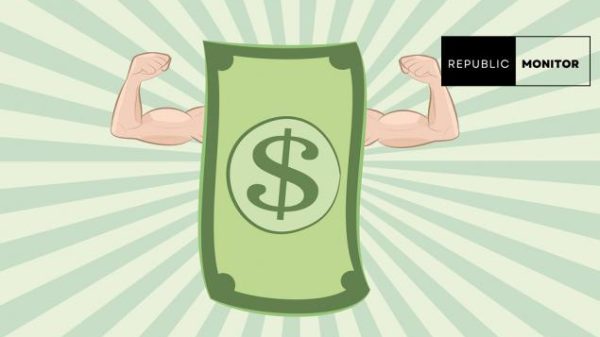Millions of Americans have benefited from the United States Supplemental Nutrition Assistance Program (SNAP), gaining access to basic food items that they would not have been able to afford otherwise. Given that SNAP is a federal program, it’s natural to assume that it operates uniformly across the country.
In practice, however, the presence of local SNAP offices, the method by which benefits are calculated, and varying regional economic circumstances result in some significant differences in SNAP benefits by state. This is most visible in the informal names of programs and the average amount of benefits provided per household.

Leon Simmons of Charleston, S.C. (Photo: The New York Times)
Snap Benefits
SNAP is a government assistance program that allows low-income individuals and families to buy food from specific retailers, typically grocery stores and farmers’ markets. Initially using paper “food stamps,” electronic benefits transfer (EBT) cards began to take place in 1990.
SNAP is the largest of several nutrition assistance programs available in the United States. The program is designed to address the food insecurity aspects of poverty rather than the underlying causes.
SNAP benefits are available in all 50 states and the District of Columbia, though 29 call their programs by a different name, such as Food Stamps in Idaho and CalFresh in California. Each state also has its EBT card as part of its benefits program, which may also have a unique name, such as the Lone Star Card (Texas) and the Arizona Quest Card.
More than 42 million Americans were registered in SNAP as of June 2021, an increase of nearly 300,000 from May but a decrease of less than 1 million from the previous year. The amount of SNAP benefits is determined by an individual’s or family’s income, size, and certain other expenses.
The federal government anticipates that those receiving SNAP benefits will spend 30% of their net income on food. As a result, the monthly SNAP benefit for a net-income household is equal to the maximum benefit for its size minus the household’s 30% expected contribution. Participants with no net income will instead receive the full benefit possible.
Because SNAP benefit calculations are partially based on an individual’s or family’s income, participants may earn more or less depending on where they live.
Hawaii had the highest average monthly SNAP benefit per household member in 2019, according to the Center on Budget and Policy Priorities, at $258. Furthermore, the Aloha State is unique in that it is the only state with an average monthly benefit of more than $200.
Alaska, the second-highest-paying state, came in at $181 per month. Arkansas had the lowest monthly benefit payment, at $108, with New Hampshire second at just two dollars higher.
Read Also: Human-Induced Climate Change Has Impacted At Least 85% Of The World’s Population, New Study Shows!

A sign noting the acceptance of electronic benefit transfer (EBT) cards, used to issue benefits from state welfare departments, is displayed at a grocery store on Dec. 4, 2019. (Photo: JUSTIN SULLIVAN/GETTY IMAGES)
SNAP Exists To Help Workers in Low-Paying Jobs
SNAP was created to assist workers in low-wage jobs—often with irregular schedules and no benefits, all of which contribute to high turnover rates and periods of unemployment—afford an essential diet. Unsurprisingly, recipients tend to work in the lowest-paying jobs in the country.
According to the Center on Budget and Policy Priorities, 4.52 million SNAP participants worked in the service industry in 2018. Laborers in many of these fields earn significantly less than the average hourly wage in the United States and work fewer or less consistent hours than they would like. As such, SNAP assists them in making ends meet.
In 2018, cashiers accounted for the most significant number of SNAP-eligible workers within a single occupation, accounting for 760,300, or 23% of the entire industry. Graders and sorters of agricultural products, on the other hand, accounted for the highest percentage of SNAP participants within a single occupation (28%) despite employing only 15,700 people.
According to Brookings, 30 percent of low-wage workers (approximately 16 million people) earn less than 150 percent of the poverty line in 2019. As a result, it stands to reason that the three states with the highest percentages of their populations living in poverty (Mississippi, Louisiana, and New Mexico) were also among the top five states regarding SNAP participation as a percentage of the total population in 2019.
The most significant differences in SNAP benefits by state are due to the economic circumstances of each participant and the state in which they live, rather than anything inherent in the program itself. Residents of states with high poverty rates will naturally be more in need of SNAP than others. The program is geared more toward keeping people afloat than addressing the systemic issues that allow poverty to exist.
SNAP has proved to be a major resource for millions of Americans in need, and it isn’t the only nutrition assistance program available.
Despite this, according to the Center on Budget and Policy Priorities in 2021, researchers estimate that SNAP benefits are about $11 per person less than the amount required to pay for a weekly nutritious meal plan. This is especially noticeable in higher-cost areas, where healthy diets are challenging to afford for low-income families due to higher living costs.
Read Related Article: Father Of The Pregnant Georgia Mother Who Was Fatally Shot, Speaks Out















